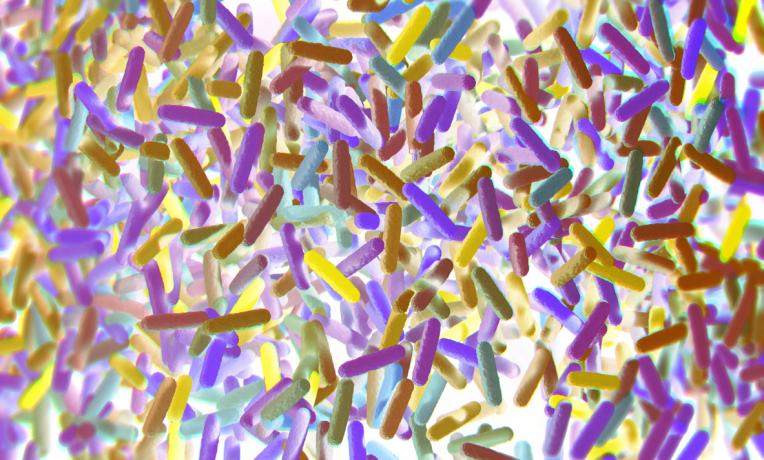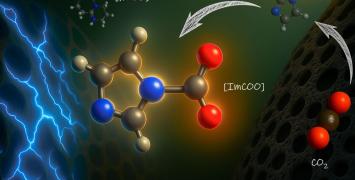Microbiome research: Getting the big picture on microorganisms
Bacteria, fungi, viruses… we associate them with nasty health conditions and incurable diseases. However as part of greater microbiome environments, they can play a crucial role in keeping humans and our planet healthy. On World Microbiome day, we take a peek at projects studying microbiomes and at the solutions they may generate to some of our biggest problems.

A microbiome is a community of microorganisms that live in a confined environment. Soils, oceans, and food host microbiomes, so do plants, animals and even the human body. Microbiome composition can vary and can include a vast number of different bacteria, archaea, fungi and viruses.
Today only 1% of microbiomes have been studied and most of what we know is about human ones (8% of those studied are related to agriculture and only 4% to food production). A better understanding of microbiomes could help address a number of key societal challenges, including food and nutrition security, food waste management, climate change mitigation and adaptation. It may also bring new angles to treat diseases, from new antibiotics to treatment for obesity and non-communicable diseases like diabetes and cancer.
A pill for obesity?
In our bodies, microbial communities are extremely rich and diverse: the number of microbial cells largely outnumbers that of human cells. Research has revealed the important role of bacteria in fostering a strong immune system, keeping healthy digestive systems and balanced hormone levels.
ERC grantee Fredrik Bäckhed
from the University of Gothenburg, focuses on the microorganisms living in our digestive tract. He noted bariatric surgeries used to treat obesity have a clear beneficial impact on patients’ gut microbiome and physiology, helping them lose weight and leading to improvements in their metabolisms. He asked the question: could these changes be triggered in obese patients without them going under the knife?
With his team, he already shown that the more effective the surgery, e.g. gastric bypass, the more profound the effect on the microbiome. The researchers are now running clinical trials to figure out how surgery induces these effects. They hope it can lead them to a new drug or bacteria that can mimic these changes to the gut microbiome.
Of land and sea
Interventions in microbiomes could also make our food systems healthier, more nutritious, and contribute to a safer environment. For instance, farmers could potentially reduce the use of fertilizers and chemicals, making agriculture more sustainable. Furthermore, some bacteria are crucial for extracting energy from food, reducing water, and thus contributing to a circular economy.
The microorganisms found within animals, plants, soil and oceans interact in complex ways. Researchers have only just began to understand how they can protect our planet. The world’s oceans, for example, are home to more living microorganisms than any other environment on the planet.
Under the extreme conditions of a sea abyss, bacteria thrive. They convert most of the organic matter that sinks to the bottom of the oceans back into nutrients that can be used by other organisms. Others retain carbon dioxide (CO2) and keep it in the deep ocean, removing CO2 from the atmosphere over geological time scales.
How these single-cell life forms - which live in freezing waters, with permanent darkness, high pressure and little food - contribute to the Earth’s nutrient cycle is the subject of Prof. Antje Boetius’ research. Her team completed the first global survey of abyssal bacteria, discovering thousands of species. How these organisms operate is key to understanding how our oceans will respond to climate change.
Back on land, animal gut microbiome is currently one of the hottest topics in biology. For millions of years, these microorganisms evolved and adapted in their host, becoming essential for their hosts’ health. Prof. Philipp Engel from the University of Lausanne studies honey bees, a species of pollinators important from an ecological and economic point of view but whose numbers are declining over the years.
Surprisingly, their gut microbiome is functionally similar to that of humans. However, human microbiomes are highly diverse with hundreds of species while bees’ remained much more simple… and thus easier to study.
With a multidisciplinary approach and cutting-edge genomics techniques, his team aims to better understand how bacteria evolved in the bee guts, how they function as a community, and how they influence bee health, their behaviour and biology. Their research results could also bring about new strategies for managing honey bee colonies.
Discover more projects
Some parts of the EU’s programme for research and innovation, Horizon 2020, are investing directly in microbiome research as it is seen to have the ability to create jobs and economic growth. While the ERC does not have predefined research priorities, the field’s increasing popularity amongst researchers has also led to ERC funding of more than 150 frontier research projects in this area. Discover the work of some of these researchers in this new publication and in our stories pages.





